SNAP, Shutdowns, and the 50501 Action Guide: Fighting Hunger in a Failing System
The USDA’s refusal to act has put 42 million Americans on edge. The 50501 Action Guide shows how communities can push back on this administration.
Throughout history, there have been moments when Americans had to come together to push back against unbalanced power. We are in one of those moments.
The 50501 Action Guide, created by CT 50501, was written for exactly this kind of moment. It’s everything you need to know about what comes next and how to fight back.
This is a full roadmap for those who believe democracy doesn’t run on autopilot.
It’s something we have to actively work towards and practice.
Inside are practical ways to defend the institutions that once defended us and to remind government, media, business, and faith alike that their legitimacy comes from the consent of the governed.
If you can do one thing today, share this post, print the guide, or leave a comment to help push it into more hands and to help the algorithm. The more people who join, the bigger impact we have and the greater chance to preserve our democracy.
The team who built this spent countless hours making it useful, grounded, and real.

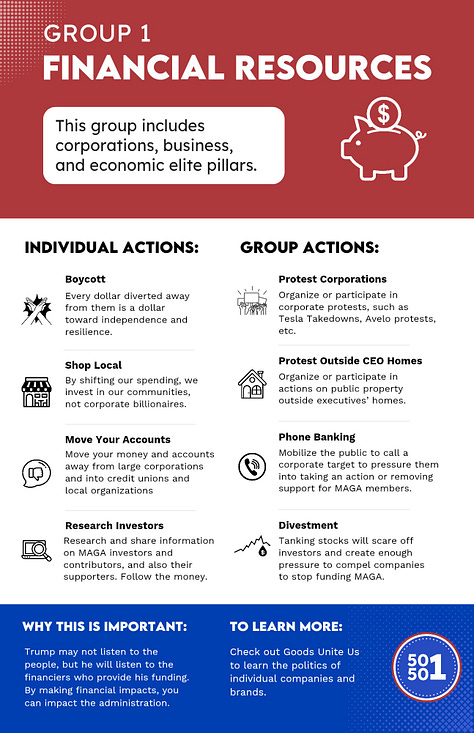
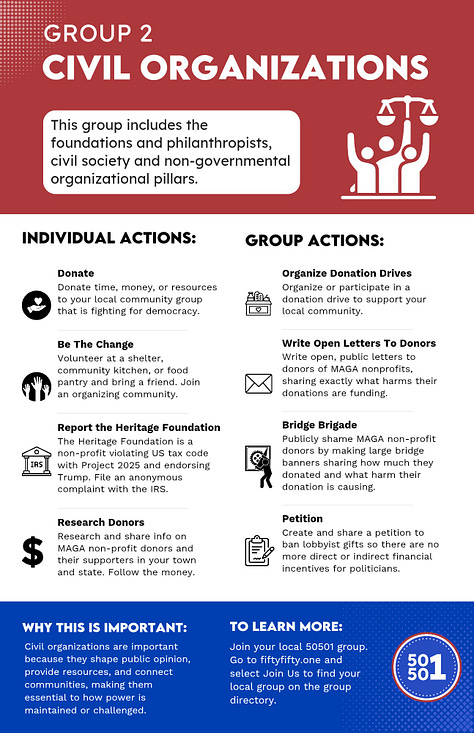
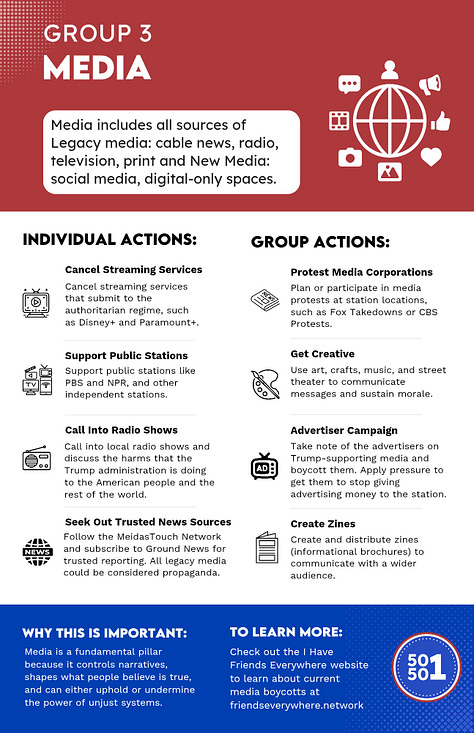
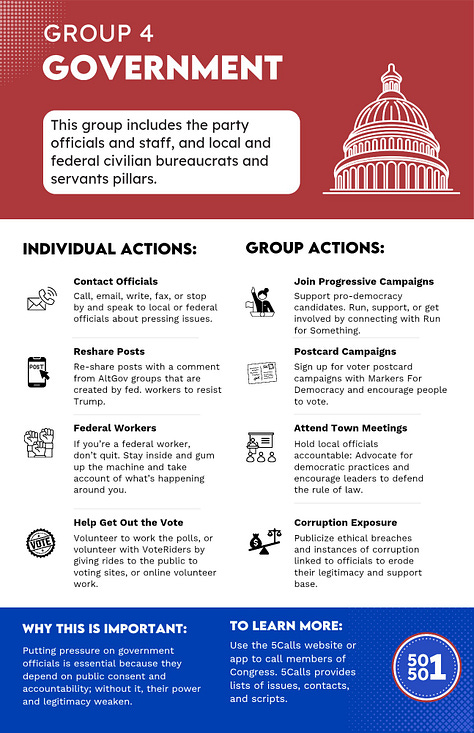

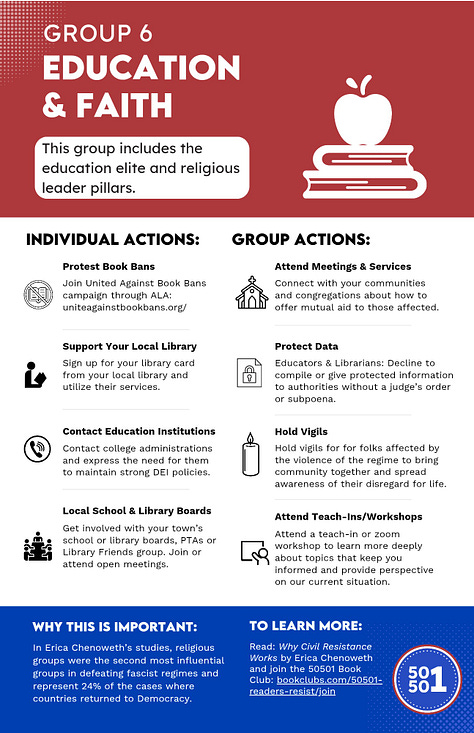


Thank you 50501 Connecticut for the incredible Action Plan!
Losing SNAP Benefits = Hunger
A home health aide in Philadelphia works 50 hours a week caring for elderly patients. At $15 an hour, her paycheck covers rent and utilities but not much else. The few hundred dollars she receives in SNAP benefits, roughly $4 per person per day for her family, this make the difference between eating dinner and skipping it.
When she calls her state’s SNAP helpline, she hears a busy signal. Again and again.
Across Pennsylvania, thousands of families are doing the same thing this week, trying to find out whether their benefits will arrive. State officials have already warned that if the federal shutdown continues past October 27, November benefits won’t be issued.
That’s seven days from now.
They’re not asking for much, just to be able to eat.
How did we build a system where feeding people depends on whether Congress can meet a budget deadline?
How SNAP Funding Is Supposed to Work
Understanding is the first step to fixing it.
Here’s how the Supplemental Nutrition Assistance Program SNAP actually works:
Step 1: Forward Funding
Congress funds SNAP in advance. When it passes a federal budget for a new fiscal year, that legislation includes the money needed to pay benefits throughout the year. This approach, known as forward funding, is meant to protect SNAP from short-term disruptions or brief gaps in appropriations.
Step 2: State Administration
The federal government sends that funding to the states, which run the program through their own agencies (usually Departments of Human Services or Social Services). States determine eligibility based on federal guidelines and manage enrollment, verification, and case support.
Step 3: Monthly Distribution
Each month, states transmit electronic files to their EBT (Electronic Benefit Transfer) vendors listing every eligible household and the benefit amount owed. The vendor processes the data and loads each household’s EBT card, essentially a debit card that can be used for groceries at authorized retailers.
Step 4: Federal Reimbursement
After the benefits go out, the federal government reimburses states for the funds distributed and covers about half of their administrative costs.
This system moves roughly $8 billion in benefits every month to about 42 million people across 50 state systems and millions of individual cards.
People will simply swipe their cards, buy groceries, and feed their families.
Where this System Breaks Down
Where it’s broken:
Administrative Operations
State offices rely on federal funding for staff who process applications and troubleshoot problems. That money’s frozen which means phones ring and lines stretch out the door.System Maintenance
EBT systems require federal tech teams for updates, fraud prevention, and monitoring. They’ve been furloughed.The Contingency Reserve
SNAP’s “rainy-day fund” has about $5 to 6 billion left (this is barely enough for three weeks) because Trump’s USDA refuses to use accounting tools that the past administrations relied on after his GAO(Government Accountability Office) allies declared them “illegal.”
We’re running a multi-billion-dollar infrastructure system on fumes while the president golfs.
The Cost of a SNAP Crisis
In California, 5.5 million people depend on CalFresh. State officials warn new applicants won’t get benefits after mid October because the Trump shutdown halted federal reimbursements.
In Pennsylvania, nearly 2 million residents, 800,000 of them children, could lose benefits entirely next week.
In Texas, 3.5 million people have been told that if the shutdown continues past October 27, the payments stop.
Now multiply that nationwide.
This is what that will look like:
Parents skipping meals so their kids can eat.
Seniors cutting pills in half because food costs more.
Teachers watching students fall asleep in class from hunger.
Food banks overwhelmed, forced to turn people away.
SNAP as Infrastructure is Being Destroyed
SNAP is infrastructure. It’s the infrastructure of food stability.
Trump and his administration are destroying it.
This infrastructure needs:
Steady funding, not crisis-to-crisis improvisation.
Maintenance and oversight.
Backup systems.
Accountability.
Food banks are meant to be supplemental and not the national safety net. Asking them to feed 42 million people because Congress refuses to sign a funding bill.
Brian McGrain, Executive Director of Michigan Community Action, warned that if benefits go unfunded, communities won’t be able to meet the emergency need.
Who Benefits
Shutdowns are acts of government sabotage.
Every other modern democracy has an automatic funding system, if Parliament or Congress misses a deadline, last year’s budget stays in effect.
We don’t because our government keep blocking it.
They say they want to “cut waste.” What they mean is cutting you out of the safety net entirely.
This shutdown started because Trump demanded Congress end ACA subsidies while still giving corporations another tax break. Democrats said no. Instead of governing, Trump and the Freedom Caucus shut it all down and bragged about it.
They call it “leverage”, but this is more: hostage-taking.
They’ve turned governance into a game of extortion.
What Needs to Change
We can fix this with structural repair.
Automatic Continuing Resolutions
End shutdowns permanently. If Congress misses a deadline, funding keeps going until they do their jobs.
Multi-Year SNAP Funding
Treat food security like infrastructure. Fund it on a 5-year cycle.
Expand SNAP Reserves
Triple contingency funds so a single bad-faith president can’t hold hunger as hostage.
State Matching Reserves
Require states to maintain two weeks of emergency funding.
Protect Federal Workers’ Pay
Workers shouldn’t be pawns. Guarantee paychecks during shutdowns.
No Pay for Congress During Shutdowns
If they cause it, they should feel it.
How You Can Help
Start a Community Fridge or Free Pantry
1. Check for existing projects first.
Before starting from scratch, see if a community fridge or pantry already exists nearby.
If one does, join forces, they may need volunteers, donations, or maintenance help.
Solidarity works better than duplication.
2. Build your community and find a host.
Use neighborhood Facebook pages, flyers, and word of mouth to gather volunteers.
Ask grocery stores, bakeries, restaurants, and farms to donate surplus food or sponsor a fridge. Find a host site… local businesses, churches, or community centers often say yes when asked.
Delegate your tasks and commit: who handles electricity, cleaning, and restocking.
3. Set up and maintain your fridge or pantry.
Check places like Facebook Marketplace, Craigslist, or a Buy Nothing group for a donated fridge or storage cabinet.
If it’s outdoors, protect it from the weather with a small shelter or enclosure.
Post clear, compassionate rules:
“Take what you need, leave what you can.”
“No open containers.”
“Label donations with dates.”
Create a maintenance plan.
Volunteers should check the site at least twice a day to restock, clean, and remove expired food.
Consistency builds trust. Even a single well-kept fridge can become a cornerstone of neighborhood care.
Support Local Food Infrastructure
Donate to food banks.
Volunteer your time.
Help neighbors who rely on SNAP.
Vote for people who believe government should serve the public
Support candidates who believe in governing.
Remember who caused this when ballots come around.
Prevention
Democracy depends on infrastructure and on systems that keep working even when politics don’t. Trump has spent his career breaking these systems from the courts to the press to the agencies that feed our most vulnerable.
We can fix this. We have the solutions. We have the support.
What we need now is the will and the voters, to make sure Trump never gets another chance to pull the plug on America’s basic humanity.
Are you about to lose your food stamps? Do you know someone who currently uses food stamps and could lose them? What will hunger look like in your community? How are people holding each other up while Trump’s government shuts down around them?
Thank you for reading!
The 50501 Movement Substack
Blue




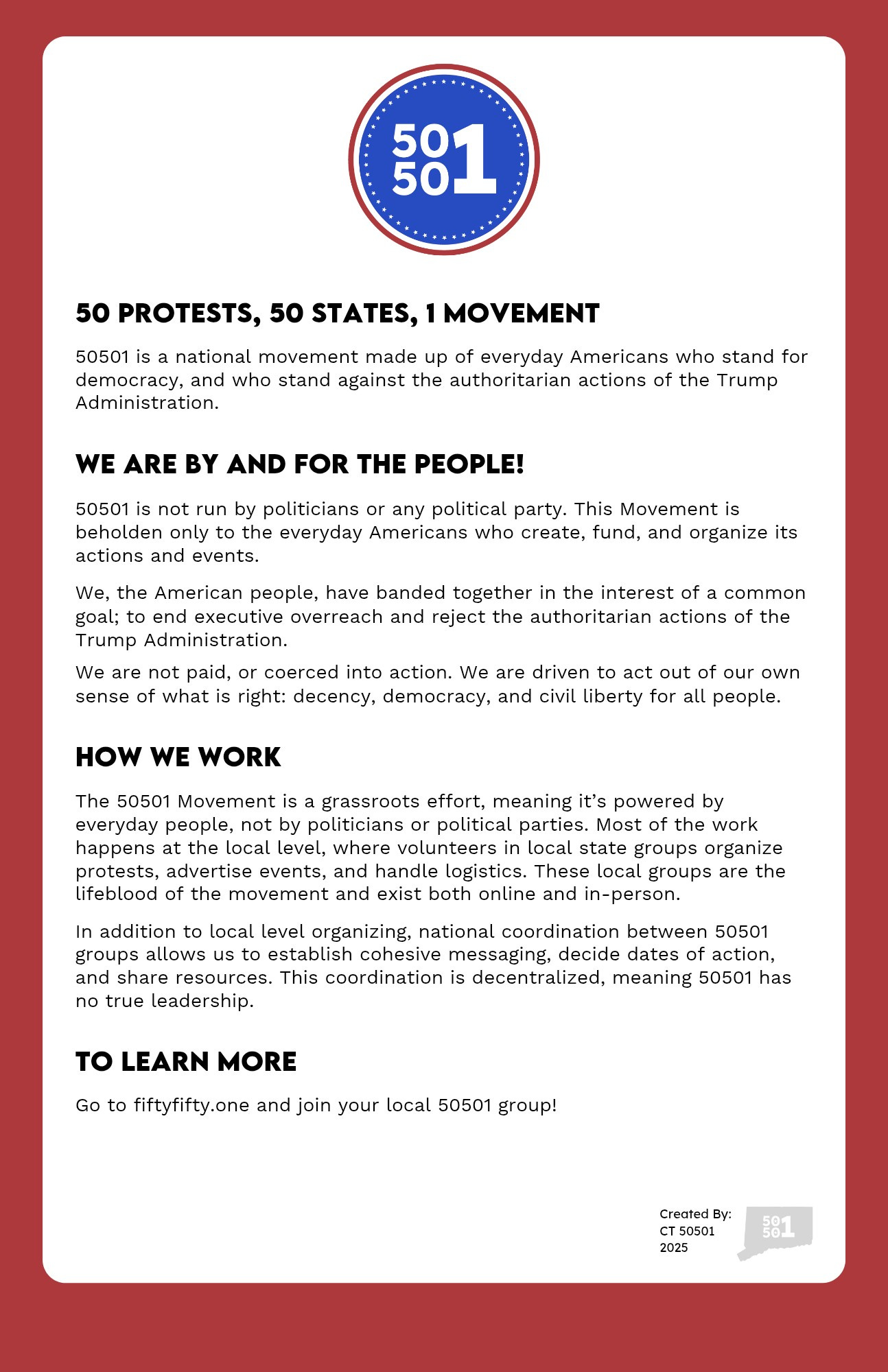

Wow…VERY IMPRESSIVE comprehensive categories of lists that everyone can find their resistance niche! 50501 was my first protest act in OKC. People were literally crying as to what was happening to our country & joy-to find their people.
Fantastic guide! Thank you!